Have you ever noticed that many Christmas cards have beautiful pictures of Mary and the Baby Jesus, but St. Joseph is nowhere to be seen? Why is it that St. Joseph is so often over-looked in the nativity scene? There is so much to learn from St. Joseph that it is a shame to take so little notice of him, especially during Advent. Here are some pictures and thoughts about St. Joseph’s Advent I’ve been sharing with my kids.
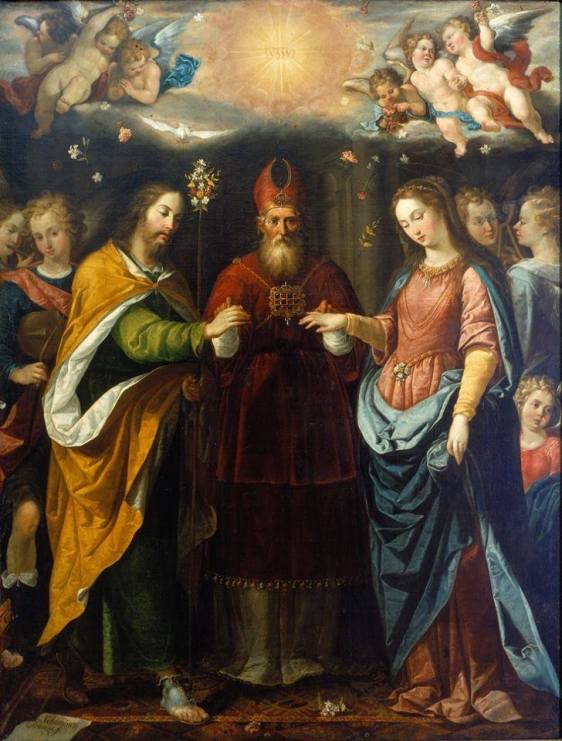
What a happy day this must have been for St. Joseph – to be betrothed to the most holy, virtuous woman he knew! In a sense, this was the beginning of St. Joseph’s advent as he joyfully awaited and prepared for a new life with Mary. In the Jewish tradition, once a couple was betrothed, they were already legally husband and wife, although they did not live together yet. This would last for about a year until the actual marriage, when then bride would be brought in joyful ceremony to the husband’s home.
We can imagine how St. Joseph planned and prepared for his new life with Mary. Perhaps he was setting up their new home, building simple pieces of furniture and trying to make everything as comfortable and pleasant as possible.
And then one day, out of the blue, Mary tells him that she wants to visit her cousin Elizabeth in the town of Ein Karem, four days journey away. Not only that, but she would go in haste. Although scripture does not mention Joseph accompanying her on the journey, it is hard to imagine that he would let her undertake such a long and dangerous journey alone. So he probably set aside his plans for the week, turned down some good business, and made ready to travel. The writings of Mary Agreda and Anne Catherine Emmerich suggest that St. Joseph accompanied her to the home of St. Elizabeth.

Presumably St. Joseph did not yet know that Mary was with child. So what did he think when he heard Elizabeth’s greeting?
She (Mary) entered the house of Zechariah and greeted Elizabeth.When Elizabeth heard Mary’s greeting, the child leaped in her womb. And Elizabeth was filled with the Holy Spirit and exclaimed with a loud cry, “Blessed are you among women, and blessed is the fruit of your womb. And why has this happened to me, that the mother of my Lord comes to me? – Luke 1:40-43
The fruit of your womb? The mother of my Lord? Here Elizabeth makes a reference to the child in Mary’s womb, but her words must have seemed nonsensical to Joseph, if he heard them. (She did say them “with a loud cry”.) Perhaps he would ponder them, as well as the miracle of Elizabeth’s pregnancy, on his journey back home.
After Mary’s three-month visit was over, he returned to pick her up and bring her home. I imagine that he was more excited than ever for their upcoming marriage. During those three months, he had probably made great progress on their new home. All the preparations for their marriage were nearly complete. Surely he had hopes and dreams, as any young man would. And then – those hopes were shattered.
When his mother Mary had been betrothed to Joseph, before they came together she was found to be with child of the Holy Spirit. -Mt 1:18
How do you think Joseph felt? Commentaries from the Navarre Bible state that St. Joseph knew and trusted that Mary was pure and holy, incapable of infidelity. Here was a mystery beyond human understanding! I can only imagine how St. Joseph tossed and turned in bed, his mind in a painful turmoil over this mystery. Being a just and honorable man, perhaps he did not want to claim a child who was not his as his own. Perhaps he suspected that the mystery of Mary’s motherhood was of Divine Origin. In this case, how could he, a simple carpenter, presume to take her as his wife? We do not know what thoughts finally led him to decide to send Mary away, we only know that “her husband Joseph, being a just man and unwilling to put her to shame, resolved to send her away quietly” -Mt. 1: 19.
See that word “resolved”? Clearly, sending Mary away was not something he wanted to do. He was going to make himself do it, difficult as it was. Somehow he must have thought that this was God’s Will. And even if God’s will was at odds with his own, even if his own hopes and dreams were sabotaged, he would obey God’s will.

But as he considered this, behold, an angel of the Lord appeared to him in a dream, saying, “Joseph, son of David, do not fear to take Mary your wife, for that which is conceived of her is of the Holy Spirit; she will bear a son, and you shall call name him Jesus, for he will save his people from their sins.” All this took place to fulfil what the Lord had spoken by the prophet: “Behold, a virgin shall conceive and bear a son, and his name shall be called Emmanuel” (which means God with us). – Mt 1:20-23
When Our Lord seems to disrupt our plans, we need to trust that He has greater plans in store for us. In the case of St. Joseph, to be the chosen as the foster father of the long-awaited Messiah was probably more than he could ever have imagined. As he humbly marveled over this revelation, joy and peace must have filled his heart.
When Joseph woke from his sleep, he did as the angel of the Lord commanded him; he took his wife, but knew her not until she had borne a son; and he called his name Jesus. – Mt 1:24-25
St. Joseph’s obedience in taking Mary for his wife and Jesus as his son was his unspoken Fiat, echoing Mary’s words, “Let it be done to me according to Thy word” (Luke 1:38). Such obedience required great and constant faith. For trusting that the child in Mary’s womb was truly the Messiah would require great faith, especially since Christ’s kingship was hidden and disguised by a life of poverty and ordinary work.
In those days a decree went out from Caesar Augustus that all the world should be enrolled. This was the first enrollment, when Quirin′i-us was governor of Syria. And all went to be enrolled, each to his own city. And Joseph also went up from Galilee, from the city of Nazareth, to Judea, to the city of David, which is called Bethlehem, because he was of the house and lineage of David, to be enrolled with Mary, his betrothed, who was with child. – Luke 1:1-5
We often think of St. Joseph as a poor carpenter from the impoverished town of Nazareth. How easy it is to forget that St. Joseph, was of the house and lineage of David. He was, in fact, a prince of noble blood.
Therefore, since Christ was King, of the line of David, He made Saint Joseph to be born of this same royal line. He wanted him to be noble, of earthly nobility. In the veins of St. Joseph, therefore, flows the blood of David and Solomon, and of all the noble kings of Judah. If his dynasty still sat on the throne, St. Joseph would be the heir and would have sat on the throne in his turn. – St. Peter Julia Eymard
Just as the Kingship of Christ remained hidden during His life on earth, so too the nobility of St. Joseph went unnoticed.
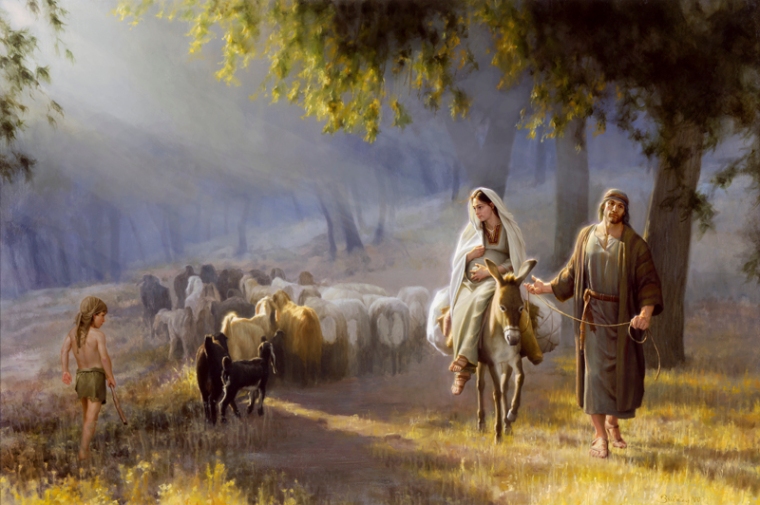
And so, because he was of the house and lineage of David, Joseph with Mary had to travel to Bethlehem. How I love this beautiful painting of Joseph and Mary travelling together! We see Mary heavily pregnant, looking at the young shepherd boy who was a foreshadowing of “the Good Shepherd”. St. Joseph, young, strong, and pensive, leads the way from Nazareth to Bethlehem, a 90 mile, four day walk. Imagine his thoughtful and attentive care for Mary and his mounting anticipation for the birth of his foster-son.

Saint Joseph seeks Lodging in Bethlehem, Tissot c. 1886-1894
What a contrast this painting is compared to the peaceful pastoral scene we just saw above. Here in a busy street in Bethlehem, St. Joseph seeks a room at an inn. We can’t see his face, but his gestures imply that he is anxious. Perhaps he is begging the innkeeper for a place to stay because he knows the time of Jesus’ birth is at hand. But, “there was no place for them in the inn.” (Luke 2: 7) Once again, things were not going as Joseph had planned.
How did St. Joseph feel at finding no better place than a barn or cave for Mary to rest and give birth? He was supposed to be the protector and provider, and this poor, dark, cold stable, a place fit for animals, was the best he could find. Did he feel incompetent for the immense task of caring for the Messiah and His mother?
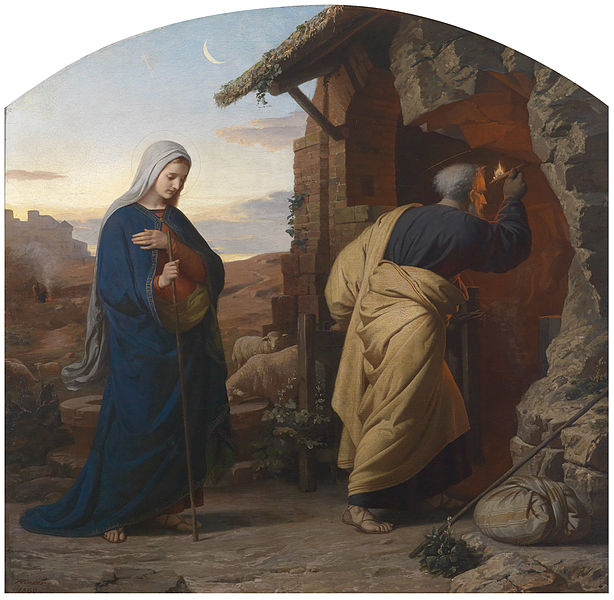
Am Abend vor Christi Geburt, Michael Riser (1825-1905)
With all humility, and accepting their plight as the will of God, Joseph set about cleaning the stable and making it as comfortable a place for Mary as he can.
Often it is only in retrospect that we see God’s wisdom when our plans are foiled. Surely St. Joseph’s plan was for Mary to give birth in a comfortable room at an inn. But can you imagine Mary giving birth in a busy, noisy, crowded inn, full of rowdy men and gossiping women? Perhaps word would have spread from other travellers that Mary was with child although she and Joseph were only betrothed. Think of the scorn and ridicule with which Mary would have been treated. Perhaps a meddlesome woman would have called for midwife, who would have insisted on aiding Mary. From a very practical, Martha-like point of view, one can see God’s wisdom in having Our Lord be born in a stable apart from the crowded inn.
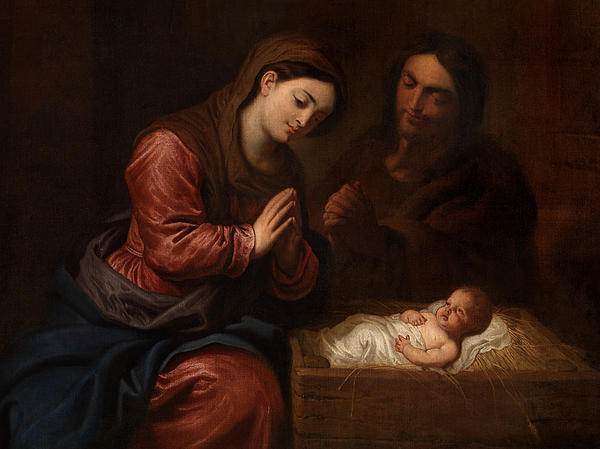
The Birth of Christ, Francken, Frans II the Younger (1581-1642)
So there, in that shoddy, crude, secluded stable, Mary “gave birth to her firstborn son and wrapped him in bands of cloth, and laid him in a manger” – Luke 2:7. In the stillness of a quiet night, in the intimate and sacred setting of a place of solitude – this is where Joseph and Mary could pray, care for, and adore the newborn Messiah in blessed silence. That the stable was physically a place of poverty was nothing, for spiritually it was a little heaven on earth.
To truly prepare for Christmas we need to remove ourselves from the hustle bustle of the busy inn and go to a still, quiet place of prayer and contemplation. We need to find our stable, the place of our own spiritual poverty. We need take a good, hard look at our own imperfections and shortcomings, and acknowledge our personal need for the Savior. How much we need Our Lord and his mercy!
This year, let’s make our Advent similar to St. Joseph’s Advent: First, let us always remain close to Mary. Also, let us strive to be humbly obedient to God’s will, even in the midst of disappointments, misunderstandings, and unforeseen difficulties. Finally, let us spend time in quiet prayer, acknowledging our spiritual poverty and our need for Christ’s mercy and grace. Then our advent will truly have meaning and Christmas will be a time of great spiritual joy.
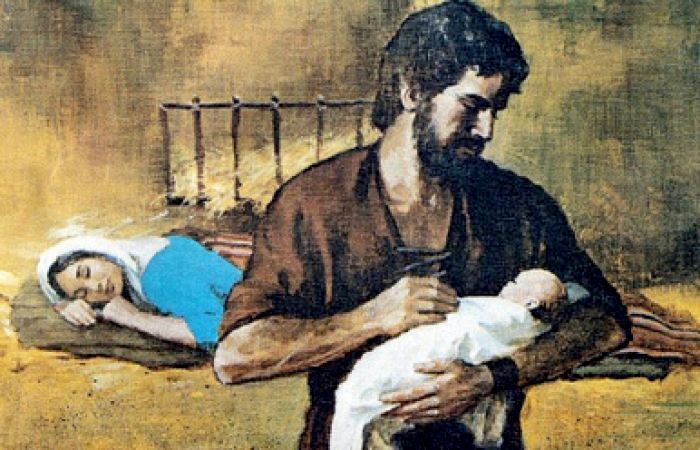
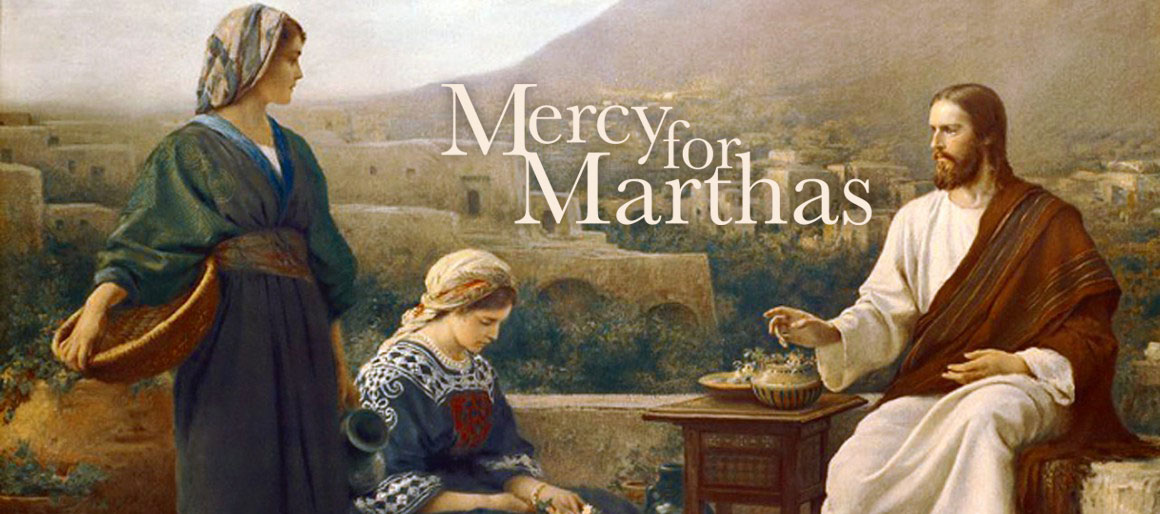

What a magnificent meditation on St. Joseph. This meditation makes this often forgotten saint come alive. The beautiful prose is complemented by the works of art that also speak volumes about St. Joseph and remind us that in former times he was not a forgotten saint. Thanks for helping bring one of the greatest of saints back to our spiritual awareness.
LikeLike
Were you able to find the artist/origin of the final painting used in the article?
LikeLike
Unfortunately, I have not been able to find the artist of that beautiful painting.
LikeLike